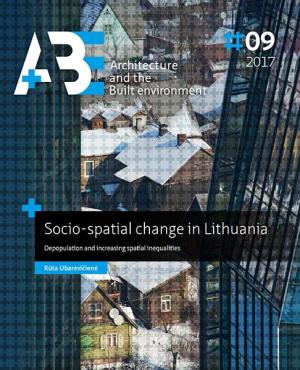Hosted by
Socio-spatial change in Lithuania: Depopulation and increasing spatial inequalities
Synopsis
The fall of the Berlin Wall in 1989 signalled a major change for Central and Eastern European (CEE) countries. Despite the significant benefits gained with the ‘return to Europe’, CEE countries have also been faced with large challenges (Gentile, Tammaru, & van Kempen, 2012; Kornai, 2006; Koví¡cs, 1999; Shleifer & Treisman, 2014). They had to transform their political and economic systems and find new ways to establish themselves in the context of increasing globalization, liberalization and technological progress. This has led to rapid and significant changes in their socio-spatial organization (Brade, Herfert, & Wiest, 2009; Gentile et al., 2012; Lang, 2011; Lang, Henn, Sgibnev, & Ehrlich, 2015; Schmidt, Fina, & Siedentop, 2015; Smith & Timí¡r, 2010). According to Stanilov (2007), due to the very rapid pace of change, the recent socio-spatial developments in CEE countries can be seen as a perfect ‘laboratory for observation’. The most significant development trends in the post-socialist countries are population decline and increasing spatial inequalities that started soon after the reforms. Of all the post-socialist countries, it is Lithuania that stands out the most, experiencing an extreme drop in population (Eurostat, 2017; United Nations, 2015). Since the 1990s, it has lost more than 20 percent of the population, which makes it one of the world’s fastest shrinking countries. Furthermore, in Lithuania in the socialist period, planning policy focused on decentralisation and sought to limit the growth of the major cities (Enyedi, 1998; Å eÅ¡elgis, 1996; Vanagas, KriÅ¡jane, Noorkoiv, & Staniënas, 2002). Now most of the economic growth and demographic potential is concentrated in a few metropolitan regions, particularly in Vilnius (Burneika & Ubareviciene, 2015; Cirtautas, 2013; Krupickaitė, 2014; Ubarevičienė & Burneika, 2015; Ubarevičienė, Burneika, & Kriaučiënas, 2011). Extreme population decline and uneven spatial development can be seen as a threat to the economic and social stability of Lithuania.
Despite the fact that significant socio-spatial transformations have been occurring for three decades in Lithuania, they have only recently started to attract greater attention. However, many issues related to socio-spatial development still receive little attention in the scientific and political domains. The aim of this thesis is to gain more insight into the recent socio-spatial transformation processes and their consequences in Lithuania.
This thesis investigates the main features and drivers of socio-spatial change. It shows why we should be concerned, despite the growing economy and improvements in the standard of living, as Lithuania is facing major challenges related to extreme population decline and increasing socio-spatial inequality. The results of this study provide a better understanding of the development processes and reveal how the Soviet-designed socio-spatial structures adapted to a market economy environment. This thesis contributes to the existing literature by investigating population decline, migration patterns, processes of segregation and increasing regional inequalities. While the focus is on Lithuania, the results of this study are also of value for other CEE countries, many of which have experienced similar trajectories of change during recent decades.
This thesis focuses on four areas of social-spatial change: population decline, shifting residential patterns, social segregation and increasing regional inequalities. These processes characterised Lithuania in the recent decades. Firstly, due to its exceptional geopolitical situation (the experience of a shift from the Soviet Union to the EU) and, secondly, due to the specific legacy of Soviet planning policy.

